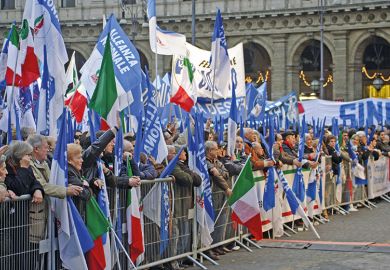If history is to be written as more than a tale of mere eventuality, it must be a story about ideas, intentions, meanings, passions and consequences. Michael Seidman, writing in the US but with a rare and confident knowledge of European affairs 80-odd years ago, offers to gather under two enormous explanatory headings the vast manoeuvres of the Allied nations of the Second World War opposing fascism, and the bloodthirsty compromises and ruthlessness that preceded it.
To encompass this enormous tableau, he constructs a political mechanics of two forces set against their fascist enemy: revolutionary anti-fascism and counter-revolutionary anti-fascism. The first denotes the banners carried by textbook communism, victorious in Russia and widespread in mainland Europe; the second gathers very different cohorts under one flag, all those social movements fighting to retain capitalism, social democracy and old conservatism (notably Churchill – whom Seidman treats as a central British figure even when he was still a voice in the wilderness, well before he came to power in 1940 – and De Gaulle).
Seidman is quite blithe about his simplifications, justifying them with keyword searches in other histories. But I was a little boy just turned 7 on D-Day, living in a home regularly filled with American airmen and British soldiers. Then, and subsequently, the enemy was always “the Germans”, not Fascism, and when as an adult I made many visits to the US, my university hosts, often ex-active servicemen, only ever referred to “the Japs”. These memories make me doubtful about Seidman’s historical explanations. Motives and emotions on the Allied side were surely as much – well – patriotic as political. Whole peoples suffered inordinately not to defend capitalism but to recover normal life. As for “counter-revolution” – Trotsky’s coinage – what uniformed Britain voted overwhelmingly for in 1945 looked very like revolution: national ownership of the utilities, the National Health Service, the 1944 Education Act, the welfare state. Each European nation duly followed suit until Margaret Thatcher and Ronald Reagan began to smash it all up 35 years later.
Seidman’s theory works most authoritatively in Spain and France. But even in Spain he might have attended more to Orwell who, when he arrived to join the International Brigade, recollected, “I did not even like what I saw very much, but I recognised it at once as something worth fighting for”. When world war finally came, he too found the patriotism that impelled him “a comelier thing than the shallow self-righteousness of the left-wing intelligentsia”.
Seidman is admirably detailed about, for example, isolationism and the fissiparous French Resistance. But he isn’t sufficiently responsive to Orwell’s open, caustic ambivalence, nor to the forms of anti-fascism exemplified by the Italian troops who surrendered in Africa as soon as they could.
This book is likely to become a useful regular on undergraduate bibliographies. Readers will find ample material for their fact-finding. But they will need to reflect further on some irregularities and veins of ardent emotion, and to reject outright the reinforced concrete of phrases such as “counterrevolutionary antifascist”. They will need to think harder than Seidman does about the hot and cold strangeness of human loyalty.
Fred Inglis is honorary professor of cultural history at the University of Warwick.
Transatlantic Antifascisms: from the Spanish Civil War to the end of World War Two
By Michael Seidman
Cambridge University Press, 340pp, £69.99 and £21.99
ISBN 9781108417785 and 05867
Published 28 January 2018
POSTSCRIPT:
Print headline: With alt-right comes alt-left
Register to continue
Why register?
- Registration is free and only takes a moment
- Once registered, you can read 3 articles a month
- Sign up for our newsletter
Subscribe
Or subscribe for unlimited access to:
- Unlimited access to news, views, insights & reviews
- Digital editions
- Digital access to THE’s university and college rankings analysis
Already registered or a current subscriber?








